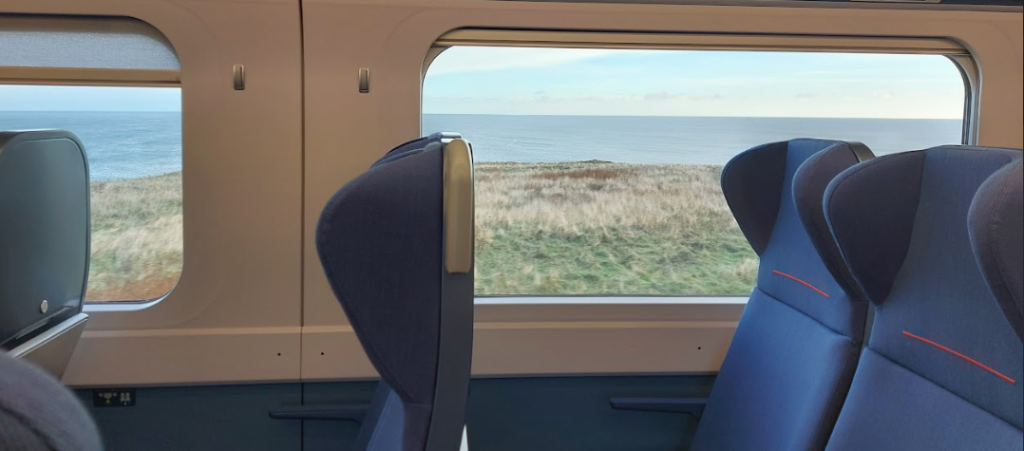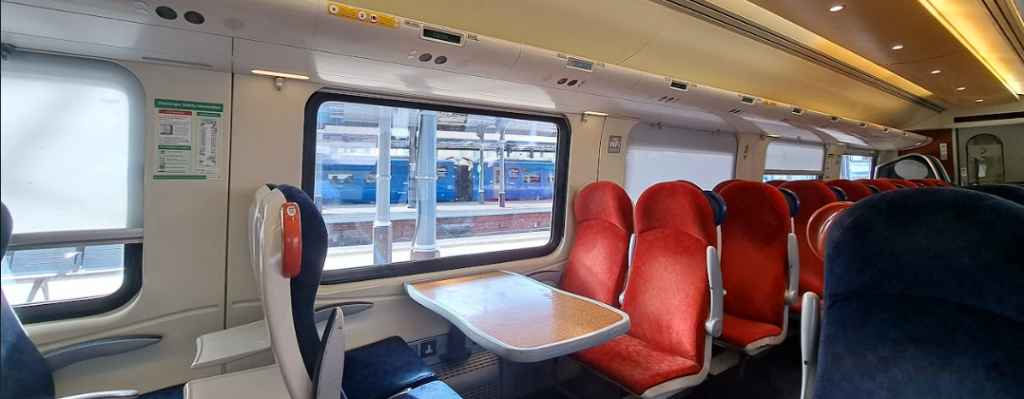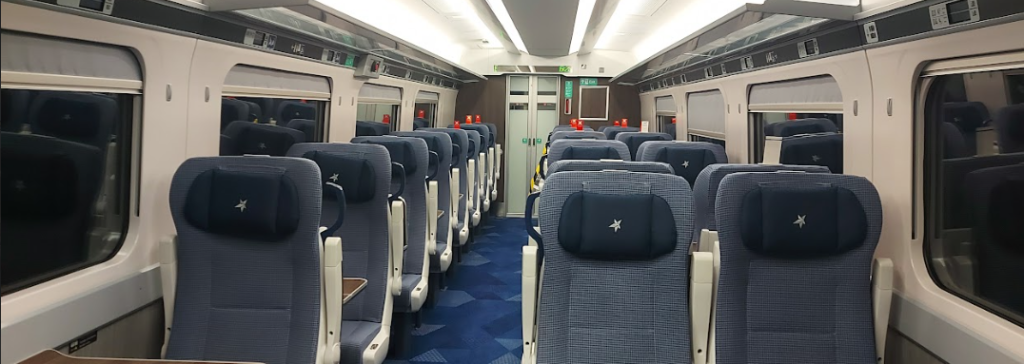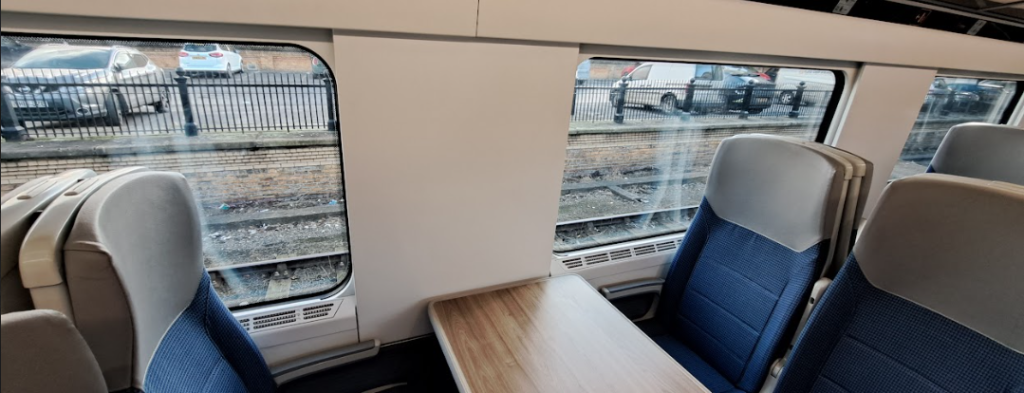What are the different train seat types?
There are lots of different terms when it comes to train seat types. After all, what does ‘airline’ mean? We’re on a train? Plus, why doesn’t my window seat have a window? We’re here to help demystify the world of train seats so that you can travel smarter.
So, what are the different train seat types?
When you book with Railsmartr, you might see a few different types of train seat to choose from. So, what do these train seat types mean?
Airline
An ‘Airline’ seat is one where you have another seat directly in front of you. You won’t be facing anyone, and you won’t have a full-size table. Instead, you’ll have a fold-down table to use. Here’s an example:

If you’re travelling alone, or as a pair, then you might prefer an airline-style seat. On most long-distance Great Western Railway, LNER, TransPennine Express and Lumo services, the table will pull out to give you some more room.
Table
This train seat type is exactly what it sounds like! You’ll have a full-size table.
With a couple of very specific exceptions (such as seats A21, A22, A27 and A28 on Avanti West Coast Pendolino trains), you’ll always have other seats (potentially with someone in them) facing you in Standard Class:

Travelling in a group or looking to get some work done on your laptop? These are the seats for you.
Individual
These train seat types are most common in First Class. They’re ‘airline-style’ seats, except that you’ll have nobody sat next to you, either. All of the seats in the left of this photo are ‘individual’ seats:

It’s occasionally possible to get an individual seat in Standard Class, but this isn’t common. For example, on Hull Trains, you can enjoy some sweet solitude in seats A49 or A50 (as well as G49 or G50 in 10-car trains).
What do some of the other train seat ‘terms’ mean?
Now that we’ve covered the basics, let’s take a look at some of the other terms that you might come across. After all, some of them aren’t very self-explanatory!
Window
This doesn’t actually translate to: ‘you’ll have a great view of out of the window’. It means that you have a seat that isn’t in the aisle. You might have a poor view out of a window, or no view at all!

For example, these are window seats, but you’d be craning your neck sideways a bit to get much of a view outside! There is an advantage being sat here though. Even if the view isn’t great, many older train types only have a power socket next to the wall. So, you’re best choosing a window seat if you want to stay powered up.
Some seating plans, such as this one for Lumo, do show the window position, so you can at least work out how much window you might have!
Window View
Some train operators add this information to the reservation system, such as Avanti West Coast. ‘Window View’ does actually mean what it sounds like.
You’ll essentially get a decent view out of the window, and one that means you don’t have to struggle to look through a gap (or stare at a wall).
Facing
This is another way to say that you’ll be facing the direction that the train is travelling, so you’ll be going forwards. It could also mean that you’re facing another person, if you’re sat at a table.
Why don’t I know which way my seat will be facing?
Not every train operator knows which way their train will be facing at any given time. So, it’s sometimes impossible to guarantee which seats will be forwards, and which will be backwards. If you’re travelling with TransPennine Express or CrossCountry, you won’t be told which way that your seat is facing, as it could be facing either way. Many services will switch direction mid-route, too.
Usually, Avanti West Coast, East Midlands Railway, Grand Central, Great Western Railway, Hull Trains, LNER and Lumo will try to keep trains in the same order. So, when you book one of their services, it’s likely to give you a particular direction.
Why do some train seats have an ‘A’ on the end?
If you’re travelling with CrossCountry, then you might notice that your reserved seat has an ‘A’ on the end, such as in this example:

What does it mean? Not a lot. You can safely ignore it! The seats on the train don’t have any sort of letters on the end. In the example above, the passenger is sitting in Coach D, Seat 20. That’s all that matters.
If you’re travelling on ScotRail, then they do their seat numbering a little differently. If you’re at a table, each pair of seats that faces each other will have the same number. One will be numbered F (for forwards) and the other will be B (for backwards). So, you’d have seats 21B and 21F (for example) facing each other.
Is there anything else I should know about train seat types?
That’s pretty much all there is to know about train seat types! We’re currently working on developing ways to help you to travel even smarter, such as letting you pick your favourite seat. Watch this space for more information.
The final thing we’d recommend is using the Railsmartr website to book your next trip. We’re completely independent, so we’re happy to ‘tell you like it is’ when it comes to rail fares. Not only that, but we’ll show you the slower, but cheaper options that some websites won’t.
Don’t forget that we don’t charge any fees, either. That includes if you change your mind and want to travel on a different day. If your ticket is refundable, we’ll refund it fee-free, too!
All information is issued in good faith. It’s subject to change at any time and Railsmartr are not responsible for any loss or disappointment incurred as a result of the information provided. All information was correct at publication (08/08/2023).